ND Symbology (PLAN) - What does this indicate?

The flight path slip/skid indicator is displayed during:
The flight path slip/skid indicator provides additional yaw reference in the case of an engine failure. At low altitude the sensitivity of the slip/skid indicator is enhanced to provide additional awareness.
When AOA SPD shows due to air data anomalies, simplified flight control laws are used. This may result in increased pitch control sensitivity to abrupt pitch control inputs.
If Unusual Attitude symbology appears, it is removed when:
Once the recovery maneuver is within these limits the Unusual Attitude symbology is replaced by the full-symbology mode regardless of the mode the HUD was in before encountering the unusual attitude.
If both outboard DUs fail, the AUX display:
Final Approach Course Pointer and Scale - The pointer is in view when:
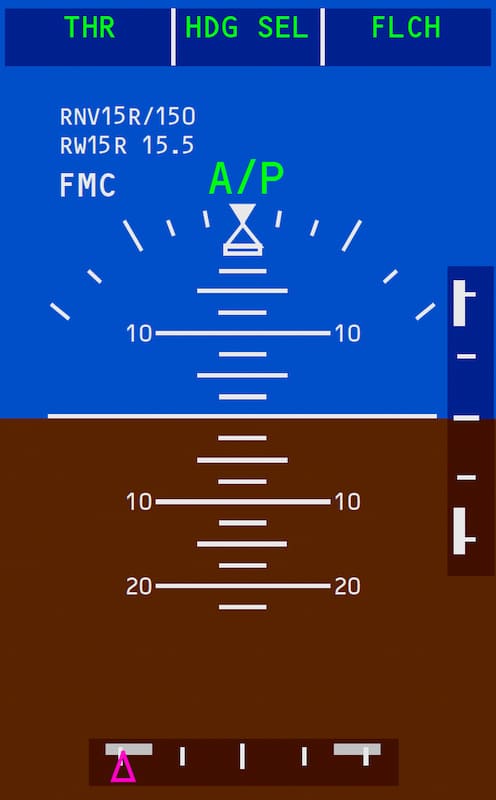
During a HUD takeoff, if the aircraft deviates more than 7m (23 ft) Left or Right of runway centerline.
A flashing triangle appears pointing in the direction of the runway centerline.
How many Total Air Temperature probes are there?
A total air temperature probe is mounted to sense air mass temperature and is used by the ADRs to compute TAT (Total Air Temperature).
When is the AOA limit symbol first displayed on the HUD?
The AOA limit symbol is displayed during 1.AOA within 5 degrees of stick shaker 2. Stick shaker is active 3. Windshear alerting with solid guidance cue displayed.
With regard to the Cursor Control Device, which of the following statement is true?
Advertisement
V2 is removed on climb-out:
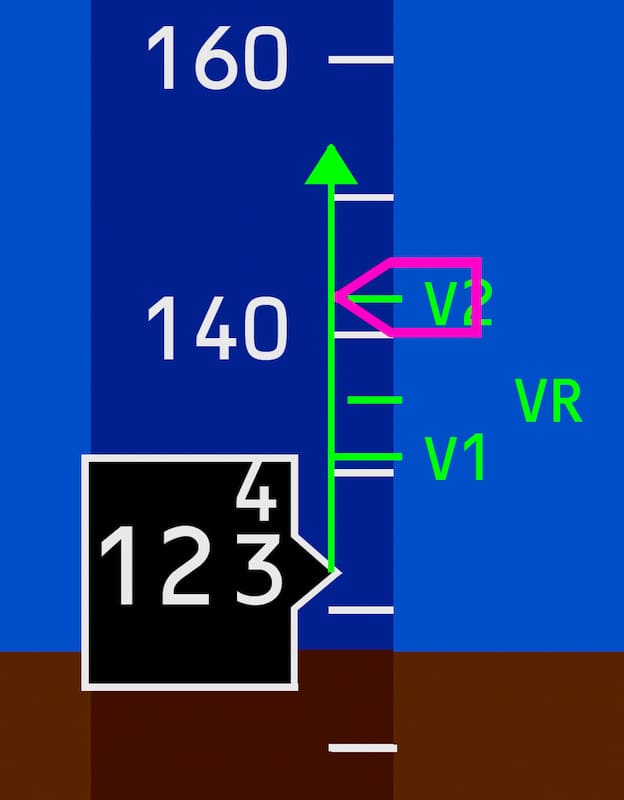
Static air temperature, displayed on the CDU PROGRESS page, comes from the ADRS, using total air temperature probe information.
During flight if an ATT:RST message appears on the IFSD:
Which control wheel switch selects the HUD declutter mode?
Navigation Performance Scale (NPS) Deviation Pointer - NPS Deviation Pointer (magenta triangle) is initially filled when parked at deflection limit, and if the lateral deviation continues to increase, the NPS Deviation Pointer (magenta triangle) will change to unfilled.
Each clock can provide elapsed time which starts automatically:
The Radio Altimeter (RA) systems send data to the:
The HUD and the PFD receive flight data from:
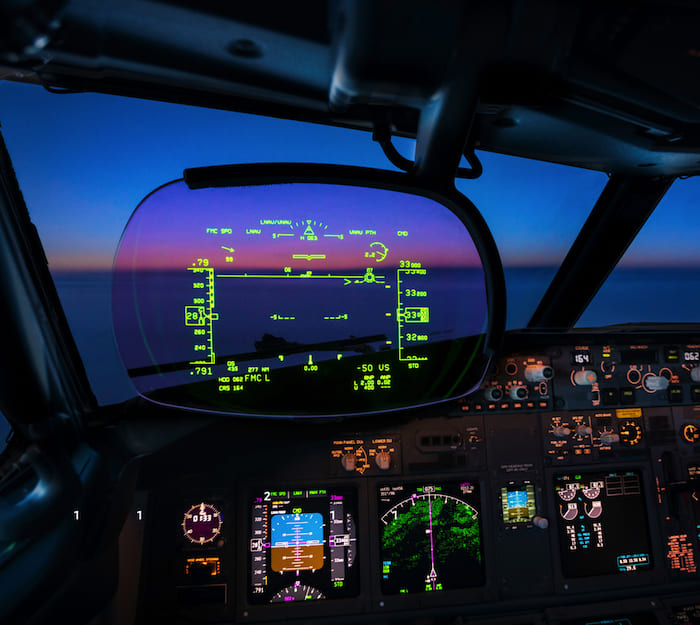
If both pilots sleect an ND into a window on the lower DU:
When pitot and/or static pressure from the air data reference system is erroneous or not available, angle of attack speed (AOA SPD) provides two major indications: the aircraft attitude and the backup airspeed that are based on angle of attack and inertial system inputs.
When pitot and/or static pressure from the air data reference system is erroneous or not available, angle of attack speed (AOA SPD) provides a backup airspeed indication that is based on angle of attack and inertial system inputs. Since it is based on angle of attack, AOA SPD is subject to indication variations during configuration changes, maneuvering, and speedbrake use.
Advertisement
A ground deceleration rate scale:
A vertical indexed scale and pointer indicate the actual deceleration rate being achieved as provided by the corresponding autobrake setting.
Which of the following are not displayed on PFD mini maps?
The mini-maps present a tactical display map with a fixed range of 20 nm. They provide immediate target and threat information and are placed below the PFDs directly in front of each pilot. Mini maps do not display information such as background waypoints, background airports and untuned navaids.
As selected on the CDU, the takeoff reference speeds V1, VR and V2 are displayed on the PFD. Instead of VR, the indication 'R' is displayed when VR is within 4 knots of V1 or V2.

The flight path acceleration symbol is removed from display when:
Actual Navigation Performance (ANP) and Required Navigation Performance (RNP) indications are displayed when:
ND Symbology (MAP, MAP, CTR, and mini-map) - What does this indicate?
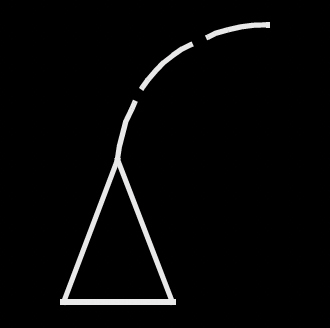
Based on bank angle and ground speed. Selected range determines the number of segments displayed. (mini-map always shows 3 segments even though range is always 20 NM.)
When does Unusual Attitude symbology display on the HUD?
The Unusual symbology replaces the full or decluttered symbology.
Due to accuracy limitations of AOA SPD at high airspeeds, the maximum speed indications on the PFDs and HUDs are reduced from 360K/.90M to _____ to provide adequate margins.
The OVERSPEED warning alerts are also reduced when AOA SPD is automatically displayed (due to NAV AIRSPEED DATA or NAV AIR DATA SYS) or when both pilots manually select the AIR DATA / ATT source selector to the ALTN position.
During a windshear alert condition the guidance cue will:
Landing Altitude Reference Bar indicates height above touchdown. There is an hollow bar displayed between _____ above landing altitude.
Advertisement
ND Symbology (VNAV path pointer and deviation scale) - It displays vertical deviation from selected VNAV PATH. Displayed only during FMC descent phase of flight. Scale indicates plus or minus _____ deviation. Digital display is provided when the pointer indicates more than plus or minus 20 ft.
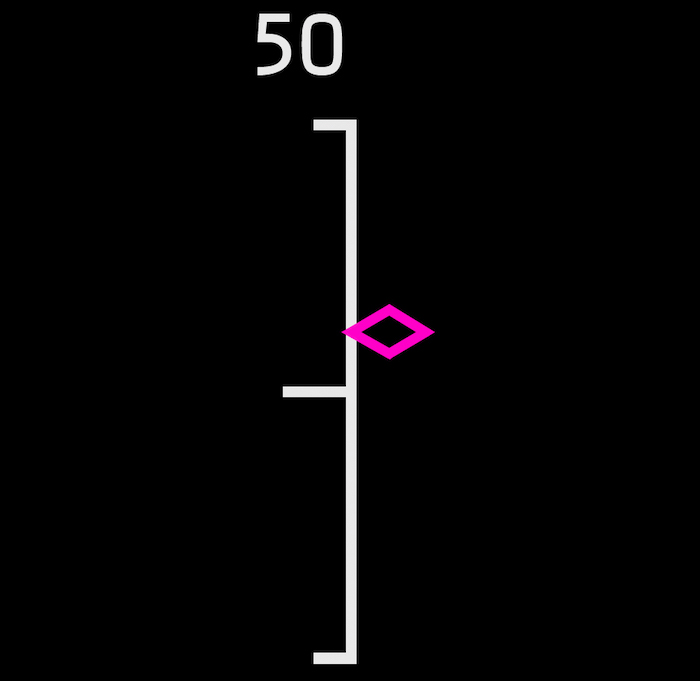
What happens if speed increases above the magenta VNAV speed band during descent?
The Integrated Standby Flight Display (ISFD) displays:
The ISFD receives airspeed and altitude from the center pitot and static air data modules. Attitude information is provided by internal inertial sensors. ILS or GLS information is provided by the left INR receiver. The display receives its heading information from the same source as the captain’s primary flight display.
How many pitot probes are there?
There are a total of five MFDs available at any one time on the flight deck. However, five instances of the same format cannot be shown at the same time
What is the meaning of the minimum maneuvering speed (lower amber bar) shown on the PFD?
If the approach courses in the ILS/GLS receivers disagree, the course turns _____ with an amber horizontal line through it.
On the PFD, the 'Rising Runway' symbology is displayed below _____ when the localizer pointer is in view for both front and back courses.
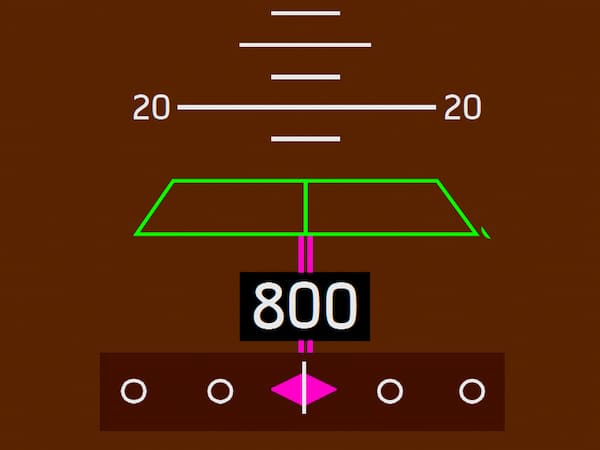
It moves toward the airplane symbol below 200 feet radio altitude. The stem of the rising runway symbol flashes when localizer deviations cause the diamond to flash.
If an outboard DU fails, the PFD:
If an EFIS control panel fails, the displays can be controlled through the backup EFIS/DSP display on the SYS page. The backup EFIS capability is available at all times, but inhibits inputs from the respective EFIS control panel.
Advertisement
When the HUD is displaying the decluttered mode:
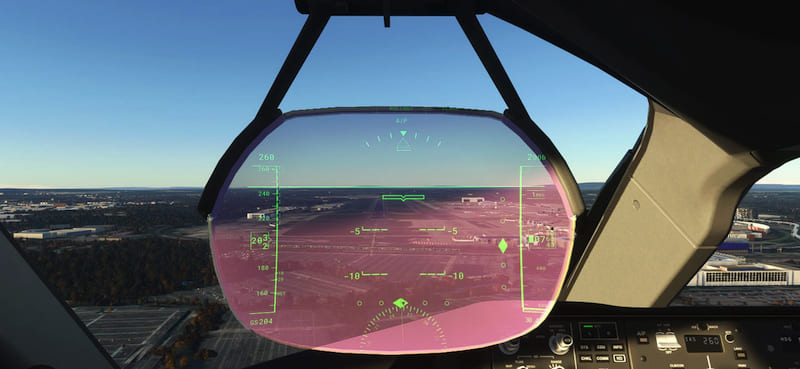
Due to the monochromatic limitation of the HUD display, many alerting functions use flashing, shape filling/blanking and highlight box symbology.
When is vertical speed displayed digitally on the PFD?
Magenta bug indicating selected vertical speed is shown when in V/S mode. HUD does not have a vertical speed tape and pointer, but shows a digital readout.
The speed trend vector indicates predicted airspeed in _____ based on current acceleration or deceleration.
Approach Reference and Navigation Source - The type of approach, runway, approach front course, the missed approach waypoint name, the distance to that waypoint and the source annunciation are displayed when the appropriate approach has been selected to the active route and the airplane is:
ND Symbology (MAP, MAP CTR, mini-map) - What does this indicate?

Glidepath Pointer and Scale - The pointer indicates glidepath position relative to the airplane position. It is in view when the airplane is:
If the pitch angle is excessively high, the HUD pitch scale displays a downward pointing chevron at the:
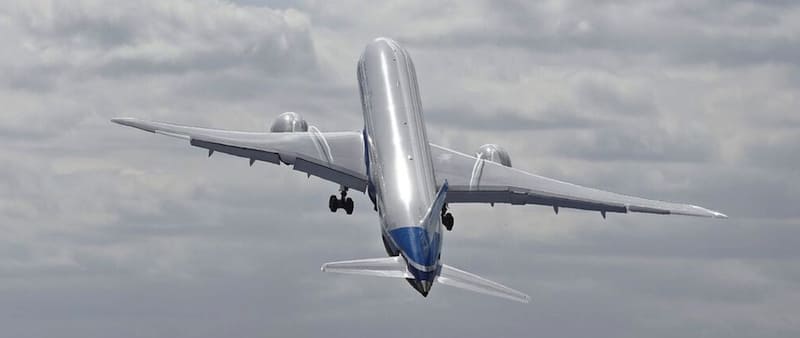
Similarly if the airplane pitch angle is excessively low, an upward pointing chevron positioned on the -20 degree pitch scale line comes into view.
